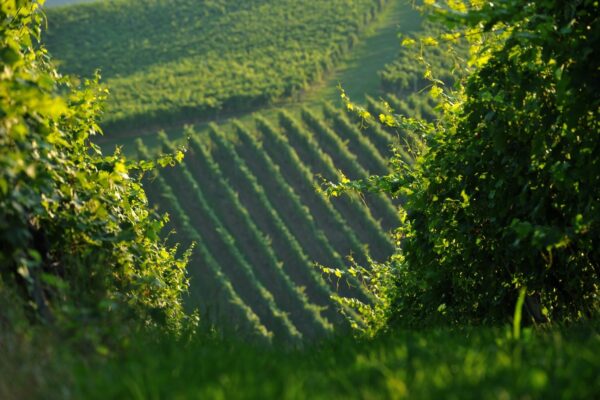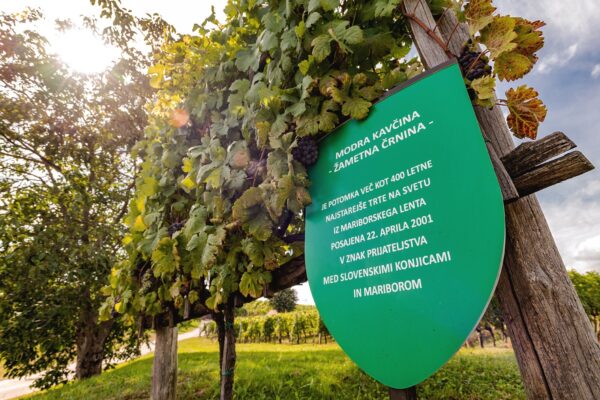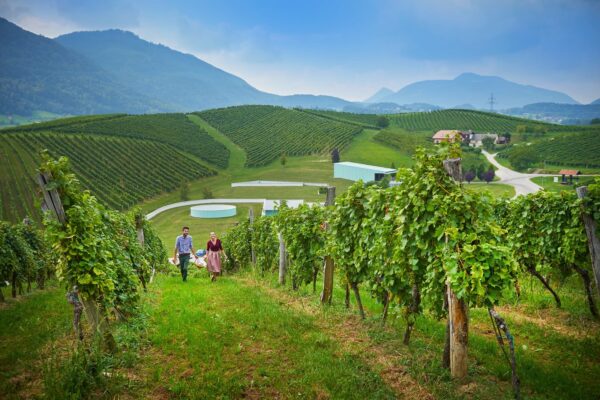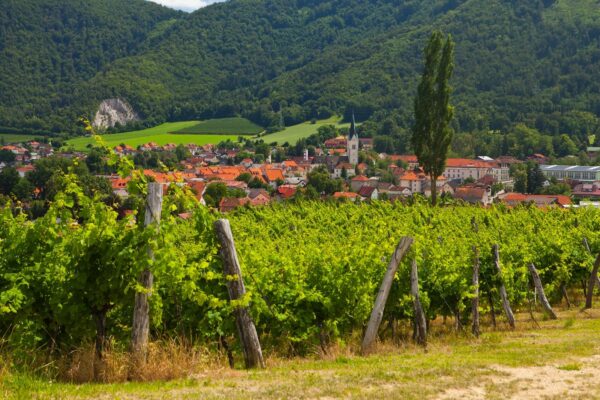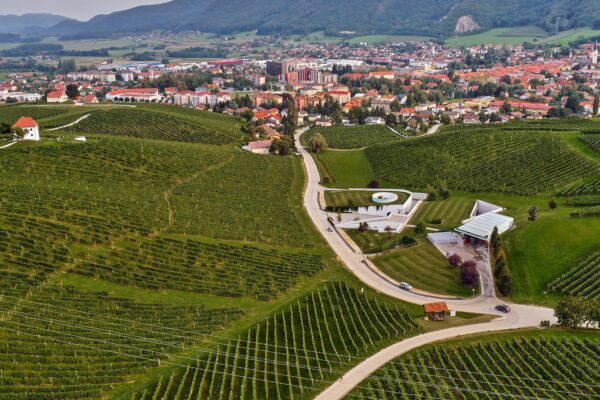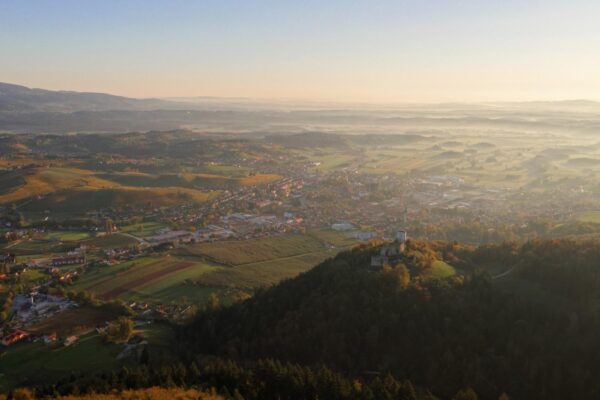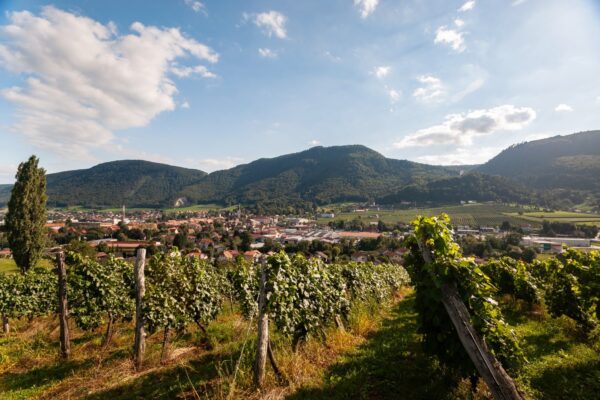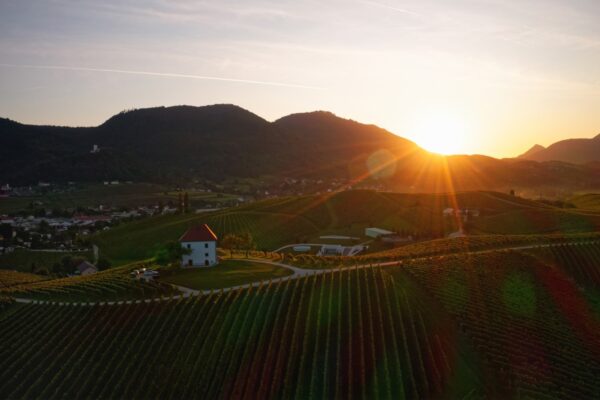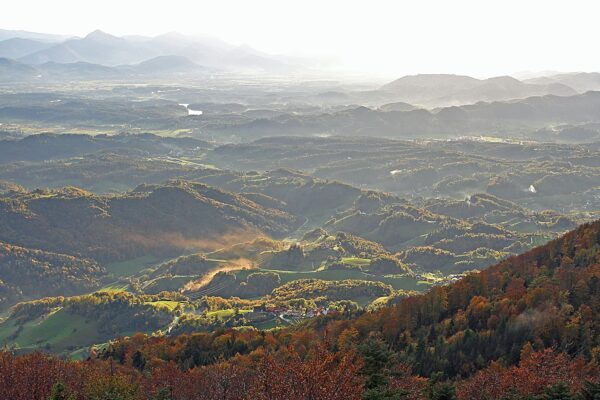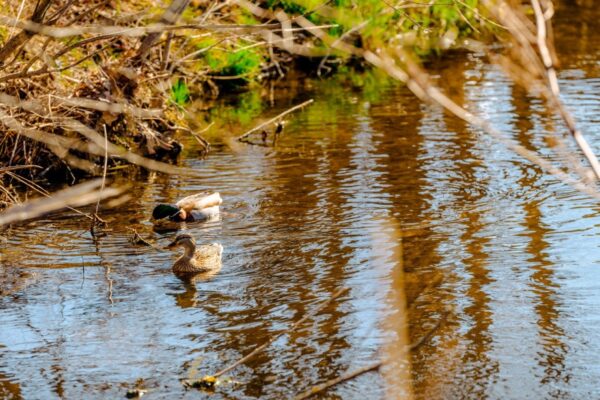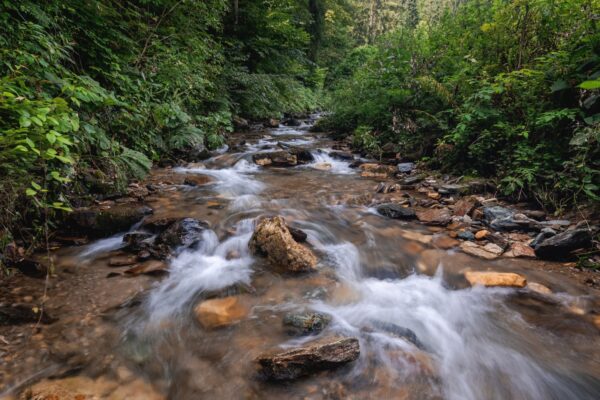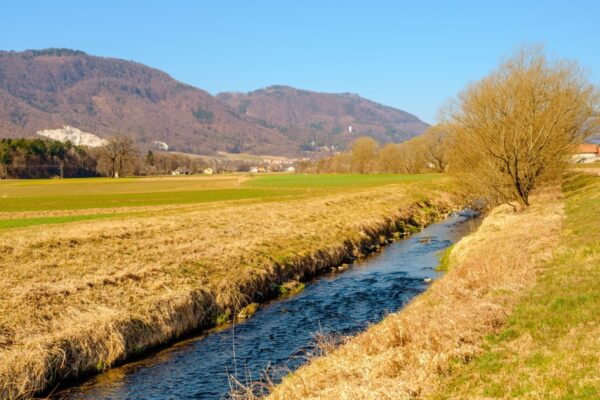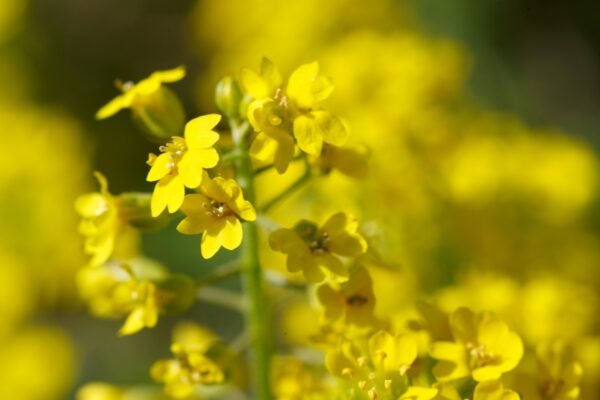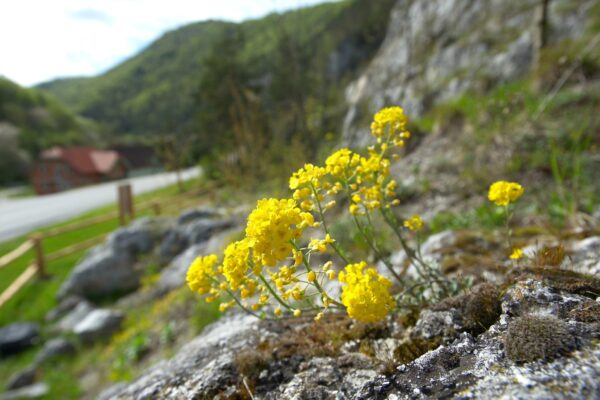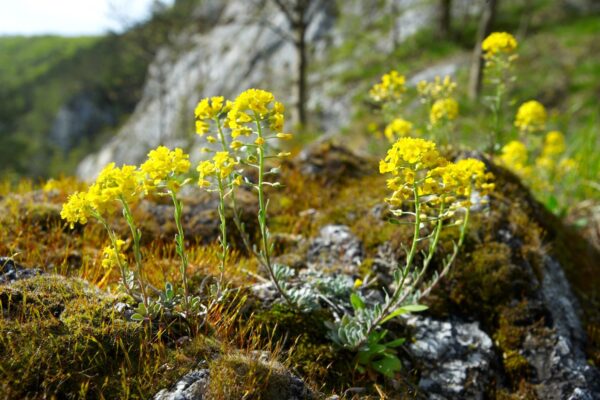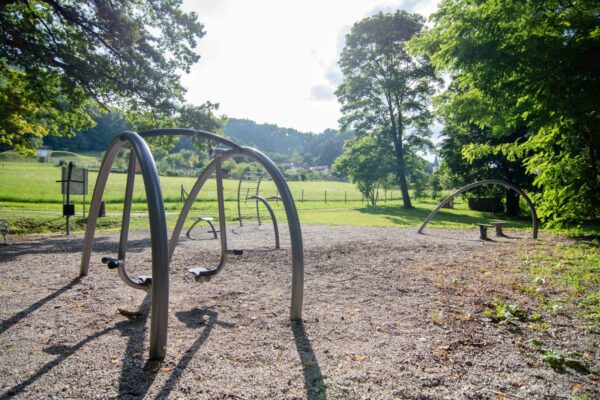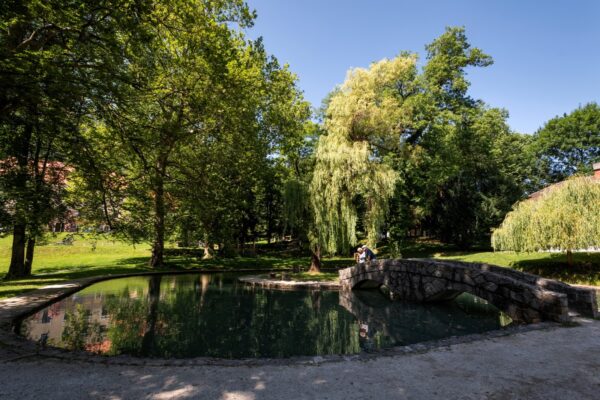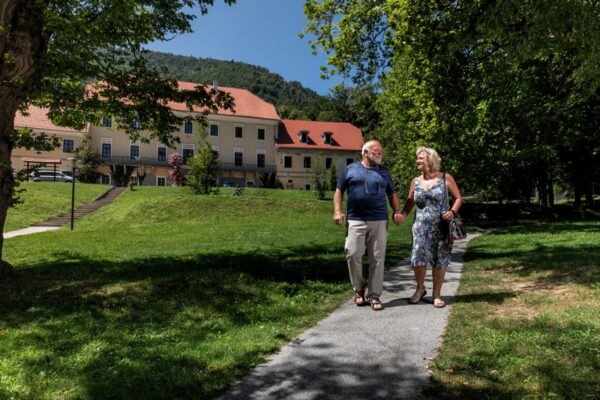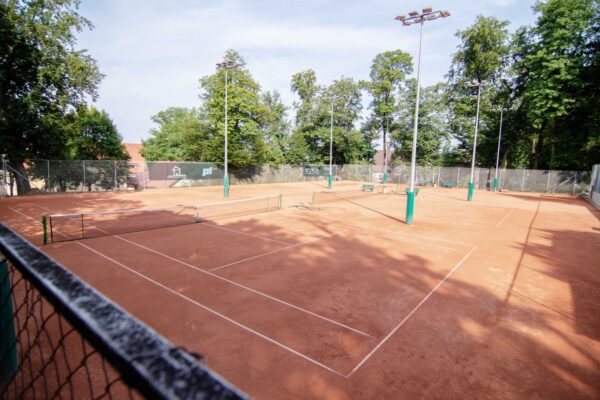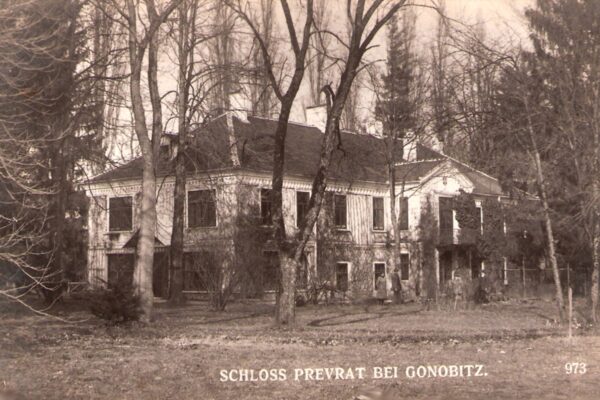Slovenske Konjice
Above the plains along the Dravinja River, you’ll find carefully cultivated fields, meadows, occasional forests, and the rising wine-growing slopes that embody the warmth, sunshine, and traditions of the local community. A walk through the Škalce wine-growing region is unforgettable in any season or weather.
Škalce was first mentioned in 1373 under the name Schalcz, later as Schkaltz (1387), Scalz (1409), and in the Franciscan cadastre as Skallitz (1825). It is one of the most beautiful and premier wine-growing locations, part of the Podravje wine-growing region, which includes the Maribor wine-growing district, the Obronki Pohorja – southern Pohorje district, and the narrower Konjice district. These vineyards are situated on the northern side of Slovenske Konjice. The marly tertiary hills are ideal for cultivating noble grape varieties.
The best vineyards are located in the central and western parts of Škalce, historically owned by wealthy proprietors, churches, nobility, merchants, and the bourgeoisie. Among the vineyards, some cottages from that era remain, such as a vineyard mansion once owned by Duke Windischgrätz. This 15th-century building is now a protected monument, featuring three beautiful apartments.
Today, in the heart of these vineyards, stands one of the most modern wine cellars, the Zlati Grič Wine Cellar. This 3,500 m² facility, with a capacity of 1.3 million liters, is built into the ground, with a roof covered in grass and other vegetation. Only select façade elements are visible, blending seamlessly into the wine-growing landscape.
Additionally, this idyllic setting includes a 9-hole golf course completely surrounded by vineyards, offering a diverse and picturesque golfing experience due to the natural features of the land.
Walking under Konjiška gora Mountain and through its forests offers an experience of beautiful nature and an immediate retreat from the fast-paced city life. The network of hiking trails, hunting lodges, parks, forest educational trails, and the diversity of plant and animal species in the remote villages provide experiences of authenticity, purity, and the soothing green of the Slovenian forests.
Srobotni Vrh (996 m), Stolpnik (1014 m), Jelenov Vrh (924 m) and Tolsti Vrh (870 m) are the highest peaks of Konjiška gora Mountain. These peaks rise above 1,000 meters for the last time, as all others to the east of Konjiška gora Mountain no longer reach such heights. The mountain is composed of carbonates, Triassic limestones, and dolomites which, despite their resistance to erosion, are not resistant to corrosion. This has resulted in the formation of high and steep peaks, with the surface scattered with numerous karst phenomena, such as grooves, sinkholes, and springs. The local inhabitants use this carbonate rock for road and building construction, with numerous quarries visible from afar at the foot of Konjiška gora Mountain.
The steep slopes are forested, once entirely leafy, but today a mixed forest prevails due to reforestation with spruce and fir. The highest areas are overgrown with conifers due to harsher climatic conditions, while the lower parts feature deciduous trees like beech, hornbeam, ash, and oak, thanks to neutral soil. In the Konjiška gora Mountain area, protected yew, red pine, and heather can also be found in poorer sites.
Mountain trails reveal natural beauty often overlooked due to the fast pace and different lifestyles. The Zmajček Forest Educational Trail, a joint effort of the Pod Goro Primary School, the Municipality of Slovenske Konjice, the Forestry Service, hunters, and the planning association, extends 3 km with 12 information points.
If you seek relaxation and exercise, Konjiška gora Mountain is an excellent choice. The hiking trails are mostly easy and accessible to a wide range of hikers. One popular trail leads past the Old Konjice Castle, and locals often stop at the Three Crosses, located at the crossroads of many other trails near the settlement of Kamna Gora. For those desiring more challenging routes, the Konjice Mountaineering Association has arranged a path to Skala, a lookout point where you can also try climbing using wedges and steel cables.
In addition to educational and hiking trails, the mountain also offers opportunities for mountain biking, running, and paragliding.
The Dravinja River originates in the central Pohorje, beneath Ovčarjev vrh Hill. Serving as the principal watercourse of the valley, it leaves a profound mark on the Slovenske Konjice area. Over time, efforts have been made to regulate its once meandering and unpredictable flow, rendering it more manageable. In sections where the river retains its natural course and remains largely unaltered, its authentic beauty and character are evident. However, lower-lying parts of the valley, particularly grassland areas, are prone to flooding, as settlements are often situated at a distance from the river.
The riparian vegetation offers natural protection to the watercourse, complemented by the diverse structures of the preserved streams, which extend into a broader belt of wet meadows, serving as habitats for numerous plant and animal species. Within the municipality of Slovenske Konjice, five areas are incorporated into the European Natura 2000 ecological network. These 5 areas coincide entirely with ecologically significant zones, encompassing just over 12% of the district’s territory.
In these areas, characterized by a wide range of habitats including gravel beds, backwaters, swamps, and rich flower meadows, we can find thriving populations of frogs, making it one of the most numerous frog habitats in Slovenia. These habitats also support endangered species of cultural landscape birds such as white storks and brown shrikes, as well as snakes, several species of fish, the carob beetle, and endangered species of butterflies.
In these areas, characterized by a variety of habitats including gravel beds, backwaters, and swamps, the Natura 2000 designation encompasses two educational paths. The Prežigal Water Educational Trail serves as an outdoor classroom and research site, offering a hands-on learning experience for various target groups and serving as a research platform. Additionally, within this area lies a protected forest of rare, preserved lowland oak trees. The Petelinjek Nature Trail is primarily designed for students, providing an interactive learning experience through 13 thematic boards that educate about life in ponds, swamps, wet meadows, alder forests, and more.
On the route to the Žička kartuzija Monastery lies a botanical treasure – the Žiče Grobeljnik.
Two notable locations are recognized within the Žičnica Valley area. The first, less renowned and challenging to reach, is situated on a steep slope between the Golo Rebro and Pletovarje tunnels along the motorway stop. Another, more renowned, is along the path to Žička kartuzija Monastery on the rocky incline of the former quarry.
The Žiče Grobeljnik belongs to the subspecies of Alyssum montanum. It is a widespread European-Mediterranean species found throughout Slovenia, primarily in the Nanos and Divača areas of the Primorska region. However, the Žiče Grobeljnik subspecies is considered endemic, existing only in the Žiče area of Slovenia. This herbaceous perennial displays its yellow flowers in April and May, reaching a height of approximately 10 to 20 centimeters. This botanical rarity was first described by the Austrian botanist Baumgartner in 1907.
The exceptional value and significance of the Žiče Grobeljnik were also acknowledged within the local community. In 2001, the Municipality of Slovenske Konjice designated this site as a natural botanical monument through the Ordinance on the Proclamation of the Site of the Žiče Grobeljnik as a Natural Monument (Official Gazette of the Republic of Slovenia, no. 4/2001), thereby assuming responsibility for its protection and preservation.
(Taken from Boldin, A. (2016). Konjice: 870 let prve pisne omembe (p. 211-212). Slovenske Konjice: Občina.)
The lower part of the park has undergone significant changes. Previously, there were two ponds in the area where the pond with the bridge is now preserved. After World War II, one of the ponds was filled in, and a tennis court was constructed over it, along with a new bridge leading to an islet in the middle of the remaining pond.
The upper part of the park, situated above the Trebnik Manor, has been largely preserved. Numerous tree species have been planted either in clusters, forming tree-lined avenues, or individually spaced. The park boasts a diverse range of indigenous and exotic trees, including various types of maples, beech, hornbeam, linden, horse chestnut, birch, and alder, among others. Following the flood in 2014, rehabilitation efforts were necessary to repair damaged trees, resulting in the planting of numerous new trees as well.
At the heart of the park stands the Baronvaj Mansion, formerly known as the Prevrat Mansion, named after Baron Vay de Vaya by the locals of Konjice.
After their marriage, Adelma and Ödön Vay de Vaya resided in Hungary for a time. In 1867, they purchased the Prevrat Manor and relocated to the then Gonobitz. The acquisition of the mansion is documented in the Land Register, where Adelma von Vay was registered as the owner on February 4, 1867. The one-story manor, built and elegantly furnished by the couple, stood adjacent to the park adorned with carefully chosen trees. Today, the park still features preserved old tree species.
Baronvaj Park is situated near the bus station and the health center, placing it at the heart of the town’s activity. The main road through Slovenske Konjice also passes close by, emphasizing its central location amidst the hustle and bustle. Despite facing numerous changes and urbanization throughout history, the park has retained its charm. The green spaces surrounding the mansion are designed primarily for walkers and those who enjoy sitting on the benches scattered throughout. As you stroll through the park, you might recall the presence of the popular Baroness Adelma, who once frequented these tree-lined paths.
Adelma von Vay, born Countess Wurmbrand-Stuppach in Tarnopol, Galicia, was renowned as a pioneer of spiritism, theosophy and humanitarianism. Alongside her advocacy in these areas, she practiced various methods of natural and energy (magnetic) healing, as well as homeopathy. Notably, she was recognized for her mystical talents, which included communicating with spirits and engaging in automatic writing.
